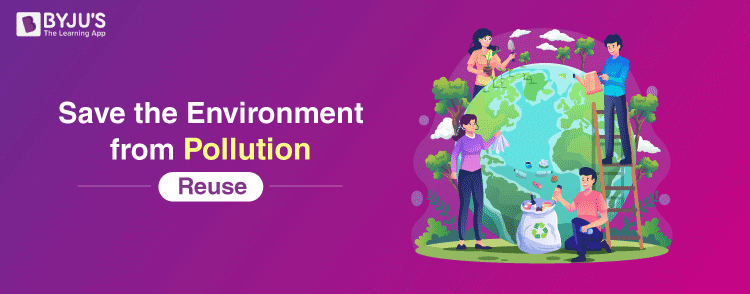Environmental Pollution is one of the biggest problems that this generation is facing. It is increasing at an enormous rate posing many threats to living beings. Many living beings like aquatic animals, birds, and even human beings are being harmed by pollution. Although it is a serious problem, reusing certain things is still in our hands to minimize it. We are the ones who are responsible for the pollution. So, it is our duty to reduce it and protect the Earth from pollution before it becomes chronic. In order to save Earth from environmental pollution, let’s understand what is meant by pollution and what are the factors causing it.

Environmental Pollution and its Causes:
The introduction of pollutants into the air, water, and soil is called pollution. In other words, the presence of contaminants in the atmosphere that will have harmful effects on living beings is called pollution. Many things cause environmental pollution. Burning down fossil fuels to power industries and vehicles is the major cause. Poor disposal of waste is also a major cause as it is being practised widely. Both individual humans and industries are responsible for this cause which can be reduced to a great extent.
Now, let’s discuss the steps we should take to heal the planet and give its freedom by reducing pollution. If we adopt the three R’s – Reduce, Reuse, and Recycle in our day-to-day life, we can easily see the change we wanted to see in the environment within a few years. This is a technique introduced by the United States of America to reduce the amount of waste generated. This technique is proved to be highly effective as it places the responsibility to prevent environmental pollution in the hands of every individual. Let’s have a closer look at how the second R, reuse can help to save the environment.
Reuse:
It makes economic and environmental sense to reduce to reuse products. Sometimes it even needs creativity. There will be a lot of things which can be re-used. For example, cool drink bottles, covers, etc. Have a look at a few steps we can take towards reusing goods that reduce pollution. Let’s show our gratitude towards planet Earth by minimizing pollution.
- Bring cloth sacks to the store with you instead of taking home new paper or plastic bags. You can use these sacks again and again. You’ll be saving some trees!
- Don’t throw out clothes, toys, furniture, and other things that you don’t want anymore. Somebody else can probably use them. You can donate them to a charity.
- Use a ceramic coffee mug instead of paper cups.
- Some smaller beverage companies use glass bottles to hold their products and promote consumers returning the bottles. The company then cleans and refills the bottle and uses it again. It is estimated that the average glass beverage bottle can make about 15 round trips between the manufacturer and the consumer before it must be discarded.
- Use cloth material rather than tissue paper and save trees.
- Buy and use rechargeable batteries instead of single-use batteries. Dispose of used batteries properly.
Finally, let us remember that it is our responsibility to save our planet from a very dreadful disease called pollution. Save the environment, save yourself, and the next generations.
Watch the video and understand what an ecosystem and its characteristics are

Frequently Asked Questions – FAQs
What is an artificial satellite?
How do satellites behave in a circular orbit?
What is a low orbit?
What is a geostationary orbit?
How do satellites behave in an elliptical orbit?
Stay tuned with BYJU’S to learn more about environmental pollution and much more.

Comments